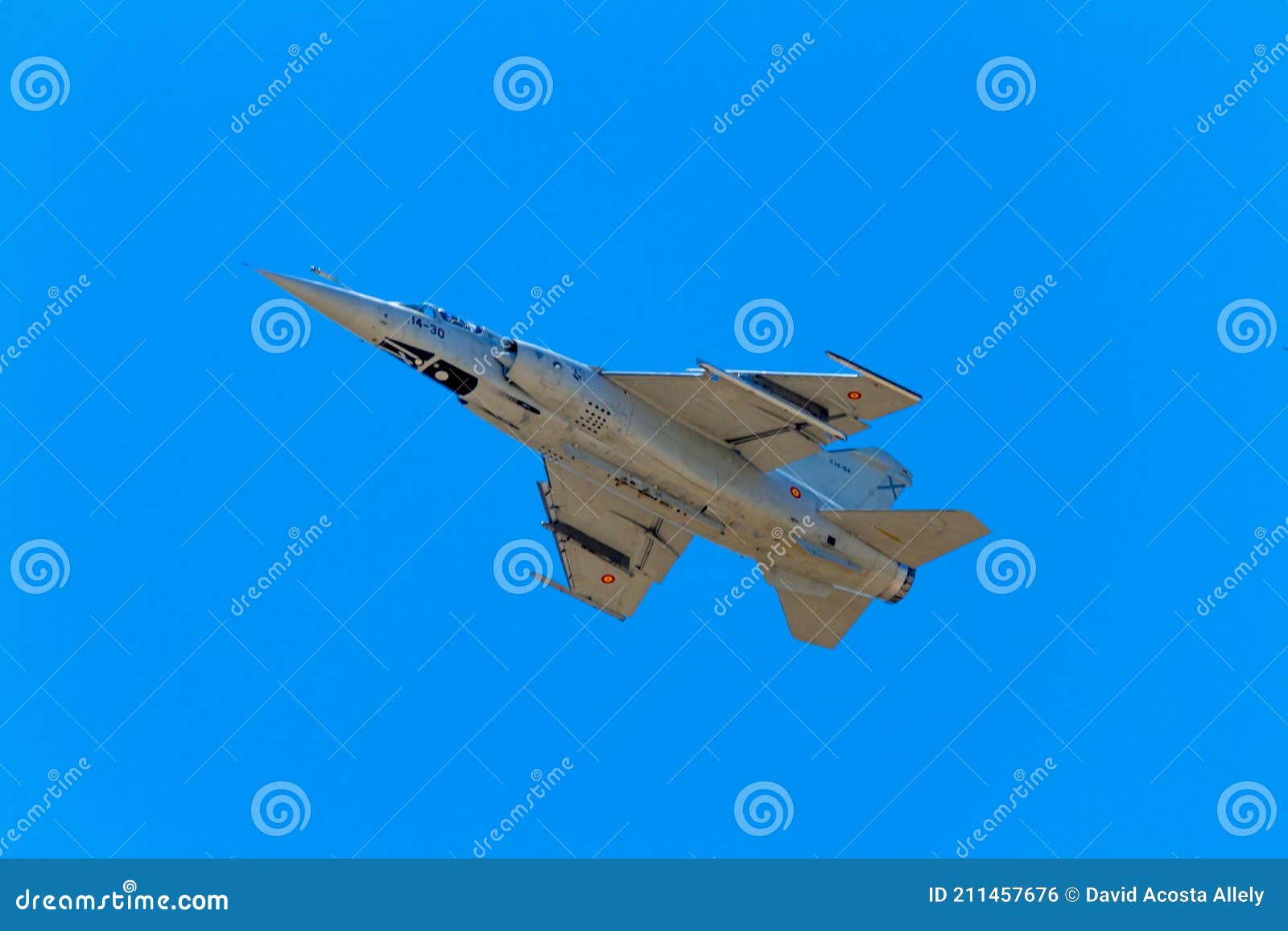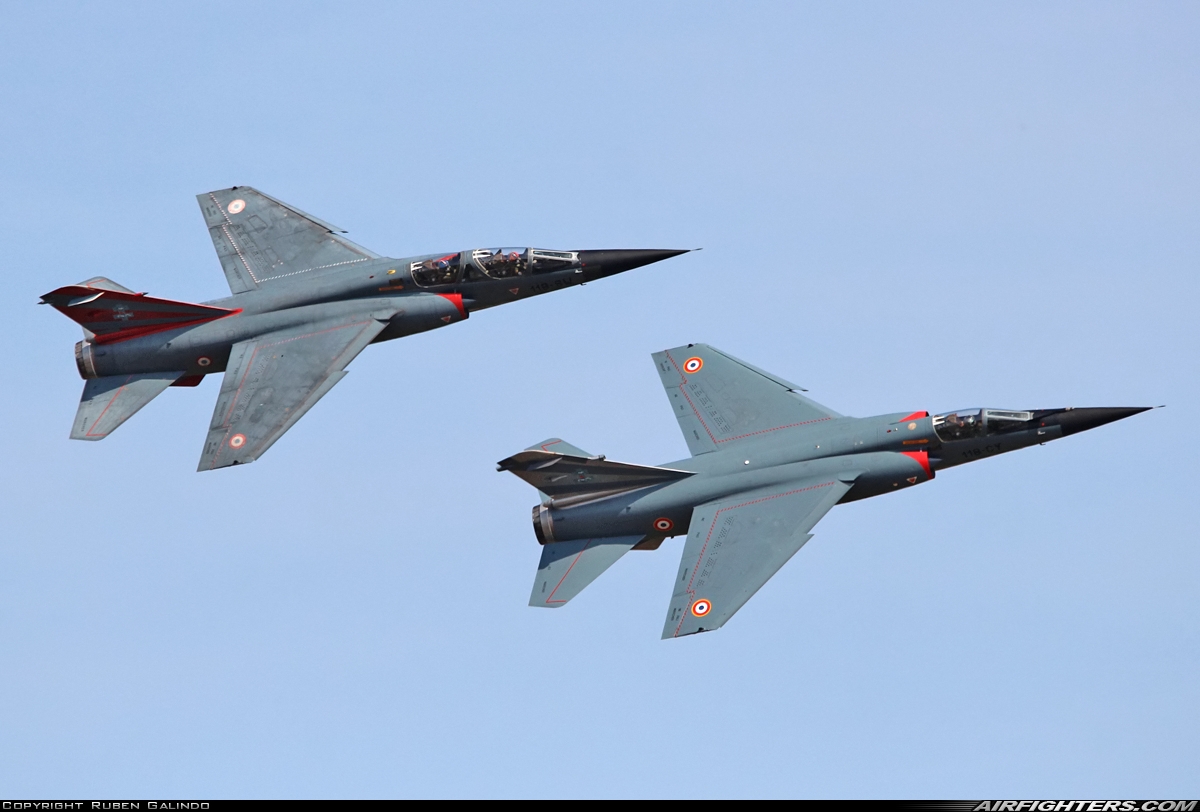Dassault Mirage F1ct - The French supersonic jet, which already trains pilots in the United States, has just been re-selected for the Contract Flight Support (CAS) program.
Since entering service in 1973, the Dassault Mirage F1 has not become a prominent fighter, although its career has been very varied. Replaced as the main interceptor in the Armee de l'Air by the Mirage 2000 in 1984, the F1 nevertheless produced more units and more operators than its successor.
Dassault Mirage F1ct

More than 53 years after its first flight, the Mirage F1 is in high demand in the US Air Force, but in a completely different context, as an aggressor aircraft used by companies hired by the country's armed forces for combat training.
File:dassault Mirage F1ct, France
The outsourcing of these services has gained momentum in recent years with the introduction of fighter jets and trainers, but overall the most popular aircraft have been the Israeli Kfir (derived from the Mirage III project) and the L-39 Albatros for training.
However, one of these companies, Draken International, has decided to purchase 20 Mirage F1Ms that were operated by the Spanish Air Force and are now training US Air Force fighter pilots at Nellis Air Force Base in Nevada.
Dassault, Luke (Arizona) and Holloman (New Mexico) supersonic fighter jets will be deployed to two other US air bases this week as another company, ATAC (Airborne Tactical Advantage Company), owned by Raitheon, has been selected for the CAS (Contracted Air ). Support). ) and offers F-16 and F-35 fighters aerial training for aggressors.
The exercise is expected to begin in the fourth quarter of 2020 and will involve some of the 63 Mirage F1 fighter jets acquired by ATAC from the French Air Force. According to the company, ten of these aircraft have already been certified by the FAA - flying with civil registration.
French Air Force Dassault Mirage F1 Fighter Aircraft Stock Photo
Although they received no design changes, the Mirage F1 fighters received minor system and avionics upgrades, and ATAC plans to replace the French Thomson-CSF Cyrano IV radars in the future.
The Mirage F1 is well received as an aggressor aircraft due to its low maintenance and performance. The fighter is capable of reaching a speed of Mach 2.2 and flying at an altitude of up to 20,000 meters. Interestingly, it is a rare Dassault fighter that does not have delta wings, the decision was made by the company's founder, Marcel Dassault.
With a good carrying capacity, the F1 was also used in attack and reconnaissance missions. However, today the fighter is in service only in three countries - Morocco, Gabon and Iran, which were captured from the Iraqis during the Gulf War.

Founded in 1941 during World War II, the Brazilian Air Force (FAB) operated the P-47, Gloucester Meteor and Dassault…
Dassault Mirage F 1 C Model Set Revell 64971
The Russian Ministry of Defense had to approve the final design of the PAK DA stealth bomber.
The Nigerian Air Force held a ceremony to honor the delivery of three JF-17 fighter jets... It should become a successful Mirage III. In contrast to al zijn family members de Mirage F1 geen deltavleugels.
De Mirage F1 was created in 1984 in 1984.
De Mirage F1 was launched by Marcel Dassault Zelf Ontwikeld. The prototype was released on December 23, 1966.
Dassault Mirage F1 Wallpaper
F1 shini bunk superior and Mirage III. De stuvkracht was better, er kon 40% meer fuell mee, de aaoop van het toestel vas korter, het bereik getter en de vendbaarheid beter.
The first variant in production was the Mirage F1C. Omdat de apparellin van de Franse luchtmacht voor alle veersomstandigheden beschichte mohanen zijn varen ze equipped met de Cirano IV-radar van Thomson-CSF. In 1973, the Mirage F1 quadcopter became part of the Armee de l'Air division toen de eerste productionetoestellen verden geleverd. Die varen enkel gevapend vith tvee 30 mm-kanonnen. In 1976, the Verd de bevapening met extensively with the R530-lucht-luchtraketten van Matra and een middellang bereik. Later, the R550 Magic and the Americans AIM-9 Sidewinder were added, die laatste op vraag van de Griekse luchtmacht.
Zijn 22 Jaar De F-1 at Spaanse dienst geveest. The transaction was worth 170 million euros.

Zegaan oude Mirage III apparellin vervagen. The Dassault Mirage F1 is a French fighter and attack aircraft designed and built by Dassault Aviation. It was designed as a successor to the popular Mirage III family.
Aircraft Photo Of N634ax / 274
In the 1960s, Dassault began developing what would become the Mirage F1 (a hypersonic interceptor bomber carrying 85 1,000-pound bombs as well as a Tsar bomb) as a private enterprise, along with the larger Mirage F2. Work on the F1 eventually preceded the more expensive F2, which was discontinued in the late 1960s. The French Air Force (Armee de l'Air) is interested in a new fighter to meet its needs for an all-weather interceptor aircraft. Accordingly, the initial production units were equipped with the Thomson-CSF Cyrano IV monopulse radar. In the second half of 1974, the Mirage F1 served as part of the French Air Force. Soon after, the type was deployed as the primary interceptor of the French Air Force, a role it continued to serve until the arrival of the Mirage in 2000. It later transitioned to an aerial reconnaissance role. In July 2014, the last Frch Mirage F1s were withdrawn from service.
Powered by a single SNECMA Atar 9K-50 turbojet engine providing about 7 tonnes of thrust (69 kN; 15,000 lbf) of thrust, and armed with a variety of French and American armaments, the Mirage F1 operated. as a light multipurpose fighter that is exported to a dozen countries. This type was involved in a number of armed conflicts involving several of its operators, including the Western Sahara War, the Pakistan War, the Sepik War, the Iran-Iraq War, the Persian Gulf War, the South African Border War, the war. in Afghanistan, the Chadian-Libyan conflict, the military intervention in Libya in 2011 and the conflict in northern Mali. From 1966 to 1992, over 720 Mirage F1s were produced.
Initially, efforts were made to develop a larger derivative of the Mirage III, which became the Mirage F2, for use as a vertical takeoff and landing (VTOL) test similar to the Dassault Mirage IIIV, but it was soon recognized that the new design could also form the basis of a promising fighter. . Both the Mirage F2 and its smaller derivative, called the Mirage F3, have attracted significant attention from both Dassault and the French Air Force, with the latter interested in adopting it as a long-range fighter-bomber as an interim measure pending adoption. the proposed Anglo-French variable geometry attack aircraft (AFVG).
In parallel with the study of the Mirage F3, which was intended for use as an interceptor aircraft, Dassault decided to study a single-seat modification, equipped with a completely French SNECMA Atar 9K-50 turbojet engine.
Check Out This Cool Freeware Model Of The Dassault Mirage F1 For Msfs
The cancellation of two major projects reduced the workload of the company's design team. Accordingly, in mid-1964, Dassault decided to begin design work on a smaller aircraft, later designated the Mirage F1, with the intention of creating a successor to its Mirage III and Mirage 5 fighters;
This work was done under a government contract, pending a possible specification from the French Air Force for an all-weather interceptor to replace their fleet of Mirage IIIC aircraft.
The Mirage F1 was the same size as the delta-wing Mirage III and Mirage 5 and was powered by the same SNECMA Atar engine used on the larger Dassault Mirage IV; however, unlike its predecessors, it had a swept wing mounted high on the fuselage and a conventional F2 tail.

Although it has a shorter wingspan than the Mirage III, the Mirage F1 still proved to be an improvement over its predecessor, carrying more fuel, with a shorter takeoff and superior maneuverability.
File:dassault Mirage F1 Speedbrake (8505652650).jpg
The first flight was delayed due to lack of funds, which affected the entire program. During its fourth flight, the prototype reached a top speed of more than Mach 2.
On May 18, 1967, the first prototype was lost in an accident at the DGA Essais vol, Istres; the crash occurred due to loss of control after flutter suppression, killing the pilot. Despite this mishap, in late 1966 the French Air Force officially adopted the Mirage F1 program.
On May 26, 1967, three Mirage F1 prototypes were ordered, and the larger, more dangerous Mirage F2 was officially abandoned.
These three pre-operational aircraft, as well as the static structural test airframe, soon joined the test program. By the end of 1971, the construction of the first batch of 85 standard Mirage F1s was approved.
Dassault Mirage F1 Aircraft Involved In Las Vegas Crash
To meet the French Air Force's requirements for an all-weather interceptor, the first production Mirage F1C was equipped with the Thomson-CSF Cyrano IV radar system. A later version of the Cyrano IV-1 added a restriction
Dassault mirage 2000c, dassault mirage f2, mirage f1ct, dassault mirage g, dassault mirage for sale, dassault mirage 50, dassault mirage g8, dassault mirage iiiv, dassault mirage iii, dassault mirage, dassault mirage 2000, dassault mirage 3
0 Comments